#Ableton Course
Explore tagged Tumblr posts
Text

#Logic Pro Course#Learn Music Production#Online Music Course#Learn to Explore#Mixing and Mastering#Ableton Course
0 notes
Text
i still bump this regularly for the record lol
sooooo I realized that "The Rebel Path" and "V" from the Cyberpunk OST are in the same key and the same BPM.... so I decided to try mixing them together and it worked surprisingly well???? I am not a music mixing expert BY ANY MEANS but here are the results lmao
#also since i made this i took a whole course on using ableton so i could probably do a way better version of this now.....#hmmmmmmm#mayhaps i will revisit the concept
205 notes
·
View notes
Text
when he gets sick (hyung line)
ot8 reactions | bf!skz x reader au genre: crack warnings: language a/n : sorry for the silence. life said ✨plot twist✨. but here’s something to distract you! ✧ hyung line | maknae line

bang chan
you walk into the room with tea in one hand and judgment in the other. chan’s in bed. sweaty. pale. wrapped in blankets like a sad spring roll. and of course… of COURSE. he’s got the laptop again. you stop. blink. “really?” he looks up, fake innocent. eyes glassy. lips dry. “what?” you squint. “why are you working right now?” he blinks slower. “…i’m not.” you glance down. ableton. open. project name: “BANG CHAN FINAL FINAL FINAL MIX ACTUAL FINAL I SWEAR” “christopher. bang. chan.” he winces “okay i was working but just for a minute—” “you have a FEVER. and a death wish.” he sniffles “my creativity doesn’t take sick days.” you sigh and set the tea down “wanna know where your creativity is gonna go?” he blinks. “IN THE CEILING. WHERE YOUR LAPTOP’S ABOUT TO BE.” he gasps. hugs the laptop to his chest like it’s his firstborn “don’t threaten her!! she has feelings!” you snatch it in one swift motion. “SHIT SHE’S FAST—” you unplug it. tuck it under your arm “you’re on rest mode. no tech. no work. no producing.” he groans. flops back dramatically. “you don’t understand. the project NEEDS ME—” “the project also needs you to be ALIVE.” five minutes later: he’s under three blankets. grumpy. arms crossed. you feed him soup. he pretends to hate it “what is this? poison?” “it’s chicken noodle, you absolute gremlin.” he slurps it anyway “…it’s pretty good.” you press a cold rag to his forehead. he sighs “you’re gonna leave me like this. laptopless. joyless. alone.” you stare “you’re gonna take a nap.” he groans. “will you at least sing to me?” “no.” “…hold me like a baby?” “…fine.” ten minutes later? he’s asleep. drooling a little. snoring soft. you check under the bed. just to make sure he didn’t stash a secret ipad or something. you find his phone. tucked into a sock like it’s hiding. you whisper “...i knew it.” bonus: the next day he wakes up feeling better. you catch him hugging his laptop and whispering, “i missed you, my love. she was so cruel to you.” you: “i will LITERALLY unplug your entire life.”
lee know
you walk into the kitchen and immediately stop. minho’s leaning against the counter like he’s doing a vogue pose on the verge of collapse. “you good?” minho (clearly not good): “never better.” he sneezes so hard he hits the cabinet. you raise an eyebrow. “you’ve blown your nose seven times in two minutes. you’re wheezing. your knees buckled when you poured orange juice.” “coincidence.” you step forward with a thermometer. he holds up a hand like you’re holding a weapon “i don’t need that. i’m not a CHILD.” “no. children usually listen better.” you try to press it to his forehead. he dodges like a ninja. you try again. he spins. you chase. he crashes into the couch. “STOP TREATING ME LIKE I’M FRAGILE—” “minho, you just fainted trying to open a yogurt.” he groans and lays back. dramatic. arm over his eyes. like he’s dying in a historical novel. “i’m fine. i’m a man. men don’t nap.” “men also die for no reason. lay down.” you drag him to the bed. he lets you. but grumbles the entire time. “this is humiliating.” you tuck a blanket over him. “this is degrading.” you bring soup. he looks offended. “…is this chicken flavor? i like beef.” “eat it before i shove it in your nose.” ten minutes later? he’s curled into the blanket. holding a warm pack to his stomach. soup almost gone. cheeks pink. “want more?” he mutters something. you lean in. “what?” “…yes please.” you grin “huh. what was that? i couldn’t hear over your PRIDE.” he glares. “don’t make me cough on you.” bonus: you catch him later whispering to doongie: “she tucked me in. like i’m some pathetic little—” he sneezes. “…anyway. i think i love her.”
changbin
you walk in to find changbin on the couch like a grumpy little burrito. blanket over his head. only his eyes and a single bicep visible. he’s watching cartoons. volume low. pout HIGH. you blink. “how are you feeling?” he sniffs. “strong.” you squint “strong like… ‘i’m good’ strong? or strong like ‘i almost cried trying to reach the remote’ strong?” he pauses. “i didn’t cry. i just grunted emotionally.” you sit down and feel his forehead. he doesn’t move. just stares dramatically. “am i dying?” he whispers. “you have a mild fever. you’re not dying.” he closes his eyes. “…tell felix to take care of my plushies.” you bring him water. he sips it like he’s been rescued from a desert. then cough suspiciously loud. “that cough was FAKE.” “was not. it came from my soul.” you hand him some sliced oranges. his lip wobbles. “…you peeled them?” “of course.” he turns away. sniffles harder “don’t look at me. i’m fine.” “are you tearing up because of fruit right now??” “no. these are just really… thoughtful citrus.” twenty minutes later: he’s in your lap. wrapped in a fuzzy blanket. cuddling a bunny plush. watching paw patrol. “i’m literally a tank,” he mumbles, full pout. “but like… a soft tank.” you kiss his forehead “my softest tank.” he sniffles again. “…don’t tell the others.” bonus: he gets better the next day and tries to act cool again. but you catch him sneaking the bunny plush into his gym bag. you: “strong again?” changbin: nods, flexing dramatically “back to beast mode, baby.” the bunny peeks out of his hoodie pocket. you say nothing.
hyunjin
you walk into the bedroom. hyunjin is face-down on the bed like he’s been defeated by life. blankets everywhere. a tissue stuck to his cheek. “…you good?” him, muffled: “no.” you bring medicine and tea. he doesn’t move. just dramatically points toward the nightstand like he’s too weak to lift a hand. “you’re so annoying.” “and sick. don’t forget sick.” you try to give him the pill. he stares at it like it’s poison “it’s huge.” “it’s literally the size of a tic tac.” “do you want me to choke and die right now? is that what you want???” he finally takes it after you bribe him with a popsicle. “you’re being so dramatic—” “WELL SOMEONE HAS TO BE.” you go to leave the room. as you turn to leave— ding-a-ling-a-ling you freeze. “…what was that.” you turn around. he’s holding A BELL. a literal. actual. fucking. bell. “where did you get that.” “my bag.” “WHY was that in your bag??” “i knew one day it would come in handy.” ding-a-ling-a-ling “stop.” “you said you’d take care of me.” “i didn’t say i’d become your room service.” “…i crave grapes.” “we don’t have grapes.” “…then cut a banana into circles and pretend.” your soul briefly leaves your body. “you are so lucky you’re cute,” you mutter, turning toward the kitchen. behind you, you hear the softest little "yay." a few minutes later, you return. plate in hand. banana. perfectly sliced. arranged in a damn circle pattern. sprinkled with cinnamon because you care, unfortunately. you set it on the nightstand. “your fake grapes.” hyunjin blinks at the plate. then at you “…you rolled your eyes so hard i thought they were gonna fall out.” “yeah. and yet here you are. fed.” he grabs the plate “i love you.” you sit beside him with a sigh “i know.” he pops a banana slice in his mouth. “…tastes like betrayal.” you throw a pillow at his face. --- twenty minutes later? he’s asleep, bell on his chest, lip poked out. you tiptoe over to take the bell. his eyes snap open. “i felt that.” bonus: you finally hide the bell. next day? he’s using the dog’s toy bell collar and shaking his whole head. “i’ve ADAPTED,” he announces, crown of tissues on his head. “you CANNOT silence me.” you sigh. “…i should’ve just let the cold take him.”

⤷ main m.list ❟
DISCLAIMER : This blog and all related content (fics, fake texts, headcanons, imagines, etc.) are entirely fictional and created for entertainment purposes only. I do not know Stray Kids personally, nor do I claim any of this reflects their real personalities, actions, or relationships. All characters and their personalities—including Meena King—are original creations.Please enjoy responsibly and remember : real people = real boundaries.

#skz#stray kids#stray kids x reader#skz x reader#skz reactions#stray kids reactions#stray kids imagines#skz imagines#skz fluff#skz funny#bangchan x reader#lee know x reader#lee minho x reader#hwang hyunjin x reader#hyunjin x reader#changbin x reader#seo changbin x reader#skz crack#stray kids crack#bf!skz#stray kids fluff
1K notes
·
View notes
Text
I can't muster up any nostalgia for the 2010s at all. It was drudgery. It was depressing as hell how directionless and saturated our cultural industries were. The decade of Chainsmokers, Imagine Dragons and Mumford and Sons dominating radio. The odd and blank stare you'd get from people for suggesting anything that wasn't EDM-pop. I. Have. Fucking. Had it. With 'Shape of You' to last a lifetime. If I never heard that song again I would be just fine. It was decade of 'Hello Sunburn, NH7 who?' (NH7 Weekender was also boring and 55+ in age, though this means something to very few people on here.)
It was the decade of swapping Ableton beats in discord channels. It was getting told off for not liking One Direction and Taylor Swift by your friends. It was when rock music had such a stone age mentality that genres couldn't mix, if you liked anything other than just rock music, you couldn't be considered a serious rocker (musician or fan).
And does anybody remember the "landfill indie" years? So much directionless indie music by bands that didn't quite have the impact for how often you heard their name: Wombats and what not.
The gender imbalance was so so fucked. Do festival bills were so dude-heavy. Sausage fest. Cock rock. We kept saying this and idiots kept saying "well maybe if women were any GOOD they'd get booked but they're sooo boring >:( and lame", like the idiots they were.
There was an all-male indie band called Scouting For Girls. The festivals they were playing had 2 girls on the lineup. The bookers did not see the irony. Or the problem.
Look at the nominations for every award show from this period. Christ.
There were a few musical highlights I guess. In terms of new bands we got like Wolf Alice, Royal Blood, Soft Play (then called Slaves) and CHVRCHES in 2013. From old bands we got Like Clockwork and AM, and Royal Blood got heavy endorsements from the likes of Alex Turner, Josh Homme and Dave Grohl for essentially 'keeping rock music alive'. Figure It Out was a banger, no less. We got Muse's Drones in 2015 too, though that's less than 5 notable rock albums I can think of in about half a decade.
We got Greta Van Fleet by 2017, but they were a talking point then because 60 year olds needed to debate whether they were allowed to exist for sounding like Led Zeppelin. Because of course. We cry when we have things and we cry when we have not. IDLES also began catching underground praise, though it wasn't as mainstream as Royal Blood received, definitely not before their Reading and Leeds 2019 performance, which was at the end of the decade, where Danny Nedelko began catching people's attention.
I'm much happier now in the music scene. There's a healthy crop of bands that have something to say, they make all sorts of music, and heavy music is surprisingly back in fashion.
As a card-carrying resident of the 2010s growing up, why would I ever want to dwell in 2015 when I can live a more inspired life in 2022?
#What I mean is Glasto 2022 was BOSS#music#Culture#Nostalgia#2010s#2010s nostalgia#early 2010s#2020s#The NOW baybee#2014#2013#2013 nostalgia#2014 nostalgia#Also Fontaines first album came in 2019. I'm v happy to live in the now#Even our Fontaines in 2014 their bio was 'we're going to save rock n roll' lol#idles#fontaines d.c.#Shame band#Wolf Alice#Royal Blood#Queens of the Stone Age#The Kooks#Arctic Monkeys#AM#foo fighters#Wet Leg 2021 was a turning point in music. Fontaines Romance 2024 was as well#musicians#2010s music#Avicii#greta van fleet
29 notes
·
View notes
Text
Music Theory notes (for science bitches) part 3: what if. there were more notes. what if they were friends.
Hello again, welcome back to this series where I try and teach myself music from first principles! I've been making lots of progress on zhonghu in the meantime, but a lot of it is mechanical/technical stuff about like... how you hold the instrument, recognising pitches
In the first part I broke down the basic ideas of tonal music and ways you might go about tuning it in the 12-tone system, particularly its 'equal temperament' variant [12TET]. The second part was a brief survey of the scales and tuning systems used in a selection of music systems around the world, from klezmer to gamelan - many of them compatible with 12TET, but not all.
So, as we said in the first article, a scale might be your 'palette' - the set of notes you use to build music. But a palette is not a picture. And hell, in painting, colour implies structure: relationships of value, saturation, hue, texture and so on which create contrast and therefore meaning.
So let's start trying to understand how notes can sit side by side and create meaning - sequentially in time, or simultaneously as chords! But there are still many foundations to lay. Still, I have a go at composing something at the end of this post! Something very basic, but something.
Anatomy of a chord
I discussed this very briefly in the first post, but a chord is when you play two or more notes at the same time. A lot of types of tonal musical will create a progression of chords over the course of a song, either on a single instrument or by harmonising multiple instruments in an ensemble. Since any or all of the individual notes in a chord can change, there's an enormous variety of possible ways to go from one chord to another.

But we're getting ahead of ourselves. First of all I wanna take a look at what a chord actually is. Look, pretty picture! Read on to see what it means ;)
So here is a C Minor chord, consisting of C, D# and G, played by a simulated string quartet:
(In this post there's gonna be sound clips. These are generated using Ableton, but nothing I talk about should be specific to any one DAW [Digital Audio Workstation]. Ardour appears to be the most popular open source DAW, though I've not used it. Audacity is an excellent open source audio editor.)

Above, I've plotted the frequency spectrum of this chord (the Fourier transform) calculated by Audacity. The volume is in decibels, which is a logarithmic scale of energy in a wave. So this is essentially a linear-log plot.
OK, hard to tell what's going on in there right? The left three tall spikes are the fundamental frequencies of C4 (262Hz), D♯4 (310Hz), and G4 (393Hz). Then, we have a series of overtones of each note, layered on top of each other. It's obviously hard to tell which overtone 'belongs to' which note. Some of the voices may in fact share overtones! But we can look at the spectra of the indivudal notes to compare. Here's the C4 on its own. (Oddly, Ableton considered this a C3, not a C4. as far as I can tell the usual convention is that C4 is 261.626Hz, so I think C4 is 'correct'.)
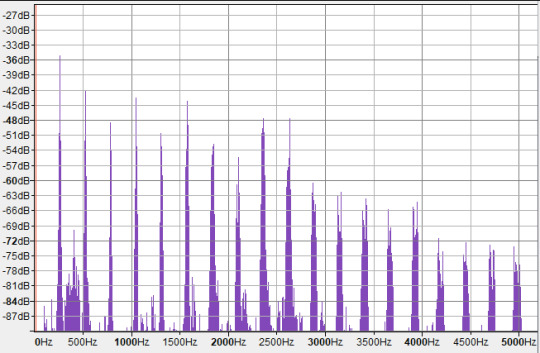
Here, the strongest peaks are all at integer multiples of the fundamental frequency, so they look evenly spaced in linear frequency-space. These are not all C. The first overtone is an octave above (C5), then we have three times the frequency of C4 - which means it's 1.5 times the frequency of C5, i.e. a perfect fifth above it! This makes it a G. So our first two overtones are in fact the octave and the fifth (plus an octave). Then we get another C (C6), then in the next octave we have frequencies pretty close to E6, G6 and A♯6 - respectively, intervals of a major third, a perfect fifth, and minor 7th relative to the root (modulo octaves).
However, there are also some weaker peaks. Notably, in between the first and second octave is a cluster of peaks around 397-404Hz, which is close to G4 - another perfect fifth! However, it's much much weaker than the overtones we discussed previously.
The extra frequencies and phase relationships give the timbre of the note, its particular sound - in this case you could say the sense of 'softness' in the sound compared to, for example, a sine wave, or a perfect triangle wave which would also have harmonics at all integer frequencies.
Perhaps in seeing all these overtones, we can get an intuitive impression of why chords sound 'consonant'. If the frequencies of a given note are already present in the overtones, they will reinforce each other, and (in extremely vague and unscientific terms) the brain gets really tickled by things happening in sync. However, it's not nearly that simple. Even in this case, we can see that frequencies do not have to be present in the overtone spectrum to create a pleasing sense of consonance.
Incidentally, this may help explain why we consider two notes whose frequencies differ by a factor of 2 to be 'equivalent'. The lower note contains all of the frequencies of the higher note as overtones, plus a bunch of extra 'inbetween' frequencies. e.g. if I have a note with fundamental frequency f, and a note with frequency 2f, then f's overtones are 2f, 3f, 4f, 5f, 6f... while 2f's overtones are 2f, 4f, 6f, 8f. There's so much overlap! So if I play a C, you're also hearing a little bit of the next C up from that, the G above that, the C above that and so on.
For comparison, if we have a note with frequency 3f, i.e. going up by a perfect fifth from the second note, the frequencies we get are 3f, 6f, 9f, 12f. Still fully contained in the overtones of the first note, but not quite as many hits.
Of course, the difference between each of these spectra is the amplitudes. The spectrum of the lower octave may contain the frequencies of the higher octave, but much quieter than when we play that note, and falling off in a different way.
(Note that a difference of ten decibels is very large: it's a logarithmic scale, so 10 decibels means 10 times the energy. A straight line in this linear-log plot indicates a power-law relationship between frequency and energy, similar to the inverse-square relationship of a triangle wave, where the first overtone has a quarter of the power, the second has a ninth of the power, and so on.)
So, here is the frequency spectrum of the single C note overlaid onto the spectrum of the C minor chord:

Some of the overtones of C line up with the overtones of the other notes (the D# and G), but a great many do not. Each note is contributing a bunch of new overtones to the pile. Still, because all these frequencies relate back to the base note, they feel 'related' - we are drawn to interpret the sounds together as a group rather than individually.
Our ears and aural system respond to these frequencies at a speed faster than thought. With a little effort, you can pick out individual voices in a layered composition - but we don't usually pick up on individual overtones, rather the texture created by all of them together.
I'm not gonna take the Fourier analysis much further, but I wanted to have a look at what happens when you crack open a chord and poke around inside.
However...
In Western music theory terms, we don't really think about all these different frequency spikes, just the fundamental notes. (The rest provides timbre). We give chords names based on the notes of the voices that comprise them. Chord notation can get... quite complicated; there are also multiple ways to write a given chord, so you have a degree of choice, especially once you factor in octave equivalence! Here's a rapid-fire video breakdown:
youtube
Because you have all these different notes interacting with each other, you further get multiple interactions of consonance and dissonance happening simultaneously. This means there's a huge amount of nuance. To repeat my rough working model, we can speak of chords being 'stable' (meaning they contain mostly 'consonant' relations like fifths and thirds) or 'unstable' (featuring 'dissonant' relations like semitones or tritones), with the latter setting up 'tension' and the former resolving it.
However, that's so far from being useful. To get a bit closer to composing music, it would likely help to go a bit deeper, build up more foundations and so on.
In this post and subsequent ones, I'm going to be taking things a little slower, trying to understand a bit more explicitly how chords are deployed.
An apology to Western music notation
In my first post in this series, I was a bit dismissive of 'goofy' Western music notation. What I was missing is that the purpose of Western music notation is not to clearly show the mathematical relationships between notes (something that's useful for learning!)... but to act as a reference to use while performing music. So it's optimising for two things: compactness, and legibility of musical constructs like phrasing. Pedagogy is secondary.
Youtuber Tantacrul, lead developer of the MuseScore software, recently made a video running over a brief history of music notation and various proposed alternative notation schemes - some reasonable, others very goofy. Having seen his arguments, he makes a pretty good case for why the current notation system is actually a reasonable compromise... for representing tonal music on the 12TET system, which is what it's designed for.
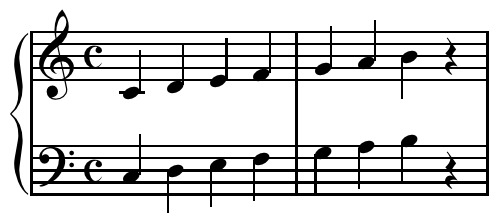
So with that in mind, let me try and give a better explanation of the why of Western music notation.
In contrast to 'piano roll' style notation where you represent every possible note in an absolute way, here each line of the stave (staff if you're American) represents a scale degree of a diatonic scale. The key signature locates you in a particular scale, and all the notes that aren't on that scale are omitted for compactness (since space is at an absolute premium when you have to turn pages during a performance!). If you're doing something funky and including a note outside the scale, well that's a special case and you give it a special-case symbol.
It's a similar principle to file compression: if things are as-expected, you omit them. If things are surprising, you have to put something there.
However, unlike the 简谱 jiǎnpǔ system which I've been learning in my erhu lessons, it's not a free-floating system which can attach to any scale. Instead, with a given clef, each line and space of the stave has one of three possible notes it could represent. This works, because - as we'll discuss momentarily - the diatonic scales can all be related to each other by shifting certain scale degrees up or down in semitones. So by indicating which scale degrees need to be shifted, you can lock in to any diatonic scale. Naisuu.
This approach, which lightly links positions to specific notes, keeps things reasonably simple for performers to remember. In theory, the system of key signatures helps keep things organised, without requiring significant thought while performing.
That is why have to arbitrarily pick a certain scale to be the 'default'; in this case, history has chosen C major/A minor. From that point, we can construct the rest of the diatonic scales as key signatures using a cute mathematical construct called the 'circle of fifths'.
How key signatures work (that damn circle)
So, let's say you have a diatonic major scale. In piano roll style notation, this looks like (taking C as our base note)...

And on the big sheet of scales, like this:

Now, let's write another diatonic major scale, a fifth up from the first. This is called transposition. For example, we could transpose from C major to G major.

Thanks to octave equivalency, we can wrap these notes back into the same octave as our original scale. (In other words, we've added 7 semitones to every note in our original scale, and then taken each one modulo 12 semitones.) Here, I duplicate the pattern down an octave.

Now, if we look at what notes we have in both scales, over the range of the original major scale.

Well, they're almost exactly the same... but the fourth note (scale degree) is shifted up by one semitone.
In fact, we've seen this set of notes before - it is after all nothing more than a cyclic permutation of the major scale. We've landed on the 'Lydian mode', one of the seven 'modes' of the diatonic major scale we discussed in previous posts. We've just found out that the Lydian mode has the same notes as a major scale starting a fifth higher. In general, whether we think of it as a 'mode' or as a 'different major scale' is a matter of where we start (the base note). I'm going to have more to say about modes in a little bit.
With this trick in mind, we produce a series of major scales starting a fifth higher each time. It just so happens that, since the fifth is 7 semitones, which is coprime with the 12 semitones of 12TET, this procedure will lead us through every single possible starting note in 12TET (up to octave equivalency).
So, each time we go up a fifth, we add a sharp on the fourth degree of the previous scale. This means that every single major scale in 12TET can be identified by a unique set of sharps. Once you have gone up 12 fifths, you end up with the original set of notes.
This leads us to a cute diagram called the "circle of fifths".
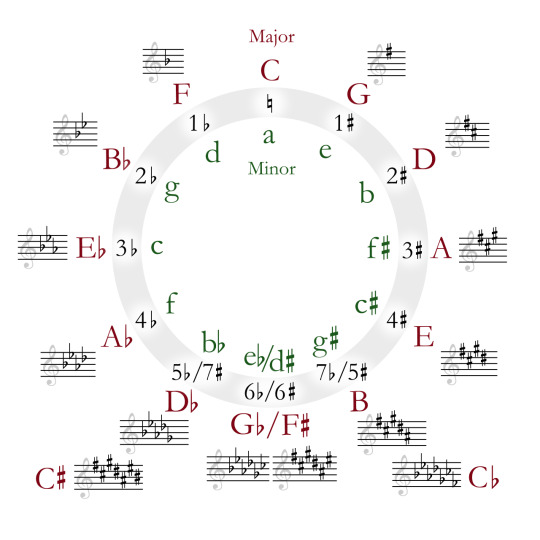
Because going up a fifth is octave-equivalent to going down a fourth, we can also look back one step on the circle to find out which note needs to be made sharper. So, from C major to G major, we have to sharpen F - the previous note on the circle from C. From G major to D major, we have to sharpen C. From D major to A major, we have to sharpen G. And so on.
By convention, when we write a key signature to define the particular scale we're using, we write the sharps out in circle-of-fifths order like this. The point of this is to make it easy to tell at a glance what scale you're in... assuming you know the scales already, anyway. This is another place where the aim of the notation scheme is for a compact representation for performers rather than something that makes the logical structure evident to beginners.
Also by convention, key signatures don't include the other octaves of each note. So if F is sharp in your key signature, then every F is sharp, not just the one we've written on the stave.
This makes it less noisy, but it does mean you don't have a convenient visual reminder that the other Fs are also sharp. We could imagine an alternative approach where we include the sharps for every visible note, e.g. if we duplicate every sharp down an octave for C♯ major...
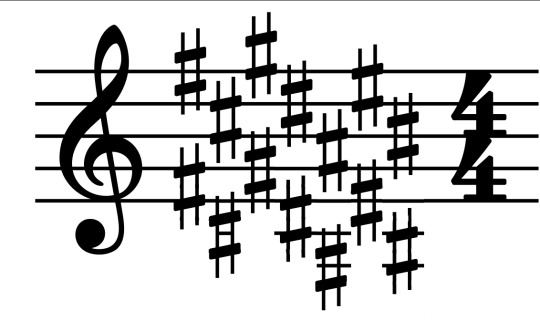
...but maybe it's evident why this would probably be more confusing than helpful!
So, our procedure returns the major scales in order of increasing sharps. Eventually you have added seven sharps, meaning every scale degree of the original starting scale (in this case, C Major) is sharpened.
What would it mean to keep going past this point? Let's hop in after F♯ Major, at the bottom of the Circle of Fifths; next you would go to C♯ Major by sharpening B. So far so good. At this point we have sharps everywhere, so the notes in your scale go... C♯ D♯ E♯ F♯ G♯ A♯ B♯ C♯ ...except that E♯ is the same as F, and B♯ is the same as C, so we could write that as C♯ D♯ F F♯ G♯ A♯ C C♯
But then to get to 'G♯ Major', you would need to sharpen... F♯? That's not on the original C-major scale we started with ! You could say, well, essentially this adds up to two sharps on F, so it's like F♯♯, taking you to G. So now you have...
G♯ A♯ C C♯ D♯ F G G♯
...and the line of the stave that you would normally use for F now represents a G. You could carry on in this way, eventually landing all the way back at the original set of notes in C Major (bold showing the note that just got sharpened in each case):
D♯ F G G♯ A♯ C D D♯ A♯ C D D♯ F G A A♯ F G A A♯ C D E F C D E F G A B C
But that sounds super confusing - how would you even represent the double sharps on the key signature? It would break the convention that each line of the stave can only represent three possible notes. Luckily there's a way out. We can work backwards, going around the circle the other way and flattening notes. This will hit the exact same scales in the opposite order, but we think of their relation to the 'base' scale differently.
So, let's try starting with the major scale and going down a fifth. We could reason about this algebraically to work out that sharpening the fourth while you go up means flattening the seventh when you go down... but I can also just put another animation. I like animations.

So: you flatten the seventh scale degree in order to go down a fifth in major scales. By iterating this process, we can go back around the circle of fifths. For whatever reason, going down this way we use flats instead of sharps in the names of the scale. So instead of A♯ major we call it B♭ major. Same notes in the same order, but we think of it as down a rung from F major.
In terms of modes, this shows that the major scale a fifth down from a given root note has the same set of notes as the "mixolydian mode" on the original root note. ...don't worry, you don't gotta memorise this, there is not a test! Rather, the point of mentioning these modes is to underline that whether you're in a major key, minor key, or one of the various other modes is all relative to the note you start on. We'll see in a moment a way to think about modes other than 'cyclic permutation'.
Let's try the same trick on the minor key.

Looks like this time, to go up we need to sharpen the sixth degree, and to go down we need to flatten the second degree. As algebra demands, this gives us the exact same sequence of sharps and flats as the sequence of major scales we derived above. After all, every major scale has a 'relative minor' which can be achieved by cyclically permuting its notes.
Going up a fifth shares the same notes with the 'Dorian mode' of the original base note, and going down a fifth shares the same notes with the 'Phrygian mode'.
Here's a summary of movement around the circle of fifths. The black background indicates the root note of the new scale.

Another angle on modes
In my first two articles, I discussed the modes of the diatonic scale. Leaping straight for the mathematically simplest definition (hi Kolmogorov), I defined the seven 'church modes' as simply being cyclic permutations of the intervals of the major scale. Which they are... but I'm told that's not really how musicians think of them.
Let's grab the chart of modes again. (Here's the link to the spreadsheet).

We can get to these modes by cyclically permuting the others, but we can also get to them by making a small adjustment of one to a few particular scale degrees. When you listen to a piece of music, you're not really doing cyclic permutations - you're building up a feeling for the pattern of notes based on your lifelong experience of hearing music that's composed in this system. So the modes will feel something like 'major until, owo what's this, the seventh is not where I thought it would be'.
Since the majority of music is composed using major and minor modes, it's useful therefore to look at the 'deltas' relative to these particular modes.
To begin with, what's the difference between major and minor? To go from major to natural minor, you shift the third, sixth and seventh scale degrees down by one semitone.

So those are our two starting points. For the others, I'm going to be consulting the most reliable music theory source (some guy on youtube) to give suggestions of the emotional connotations these can bring. The Greek names are not important, but I am trying to build a toolbox of elements here, so we can try our hand at composition. So!
The "Dorian mode" is like the natural minor, but the sixth is back up a semitone. It's described as a versatile mode which can be mysterious, heroic or playful. I guess that kinda makes sense, it's like in between the major and minor?

The "Phrygian mode" is natural minor but you also lower the 2nd - basically put everything as low as you can go within the diatonic modes. It is described as bestowing an ominous, threatening feeling.

The "Lydian mode" is like the major scale, but you shift the fourth up a semitone, landing on the infamous tritone. It is described as... uh well actually the guy doesn't really give a nice soundbitey description of what this mode sounds like, besides 'the brighest' of the seven, this video's kinda more generally about composition, whatever. But generally it's pretty big and upbeat I think.

The "Mixolydian" mode is the major, but with the seventh down a semitone. So it's like... a teeny little bit minor. It's described as goofy and lighthearted.

We've already covered the Aeolian/Natural Minor, so that leaves only the "Locrian". This one's kinda the opposite of the Lydian: just about everything in the major scale is flattened a bit. Even from the minor it flattens two things, and gives you lots of dissonance. This one is described as stereotypically spooky, but not necessarily. "One of the least useful", oof.

Having run along the catalogue, we may notice something interesting. In each case, we always either only sharpen notes, or only flatten notes relative to the major and minor scales. All those little lines are parallel.
Indeed, it turns out that each scale degree has one of two positions it can occupy. We can sort the diatonic modes according to whether those degrees are in the 'sharp' or 'flat' position.

This is I believe the 'brightness' mentioned above, and I suppose it's sort of like 'majorness'. So perhaps we can think of modes as sliding gradually from the ultra-minor to the infra-major? I need to experiment and find out.
What have we learned...?
Scale degrees are a big deal! The focus of all this has been looking at how different collections of notes relate to each other. We sort our notes into little sets and sequences, and we compare the sets by looking at 'equivalent' positions in some other set.
Which actually leads really naturally into the subject of chord progressions.
So, musical structure. A piece of tonal music as a whole has a "palette" which is the scale - but within that, specific sections of that piece of music will pick a smaller subset of the scale, or something related to the scale, to harmonise.
The way this goes is typically like this: you have some instruments that are playing chords, which gives the overall sort of harmonic 'context', and you have a single-voiced melody or lead line, which stands out from the rest, often with more complex rhythms. This latter part is typically what you would hum or sing if you're asked 'how a song goes'. Within that melody, the notes at any given point are chosen to harmonise with the chords being played at the same time.
The way this is often notated is to write the melody line on the stave, and to write the names of chords above the stave. This may indicate that another hand or another instrument should play those chords - or it may just be an indication for someone analysing the piece which chord is providing the notes for a given section.
So, you typically have a sequence of chords for a piece of music. This is known as a chord progression. There are various analytical tools for cracking open chord progressions, and while I can't hope to carry out a full survey, let me see if I can at least figure out my basic waypoints.
Firstly, there are the chords constructed directly from scales - the 'triad' chords, on top of which can be piled yet more bonus intervals like sevenths and ninths. Starting from a scale, and taking any given scale degree as the root note, you can construct a chord by taking every other subsequent note.
So, the major scale interval pattern goes 2 2 1 2 2 2 1. We can add these up two at a time, starting from each position, to get the chords. For each scale degree we therefore get the following intervals relative to the base note of the chord...
I. 0 4 7 - major
ii. 0 3 7 - minor
iii. 0 3 7 - minor
IV. 0 4 7 - major
V. 0 4 7 - major
vi. 0 3 7 - minor
viiᵒ. 0 3 6 - diminished
Now hold on a minute, where'd those fuckin Roman numerals come from? I mentioned this briefly in the first post, but this is Roman numeral analysis, which is used to talk about chord progressions in a scale-independent way.
Here, a capital Roman numeral represents a major triad; a lowercase Roman numeral represents a minor triad; a superscript 'o' represents a dimished triad (minor but you lower the fifth down to the tritone); a superscript '+' represents an augmented triad (major but you boost the fifth up to the major sixth).
So while regular chord notation starts with the pitch of the base note, the Roman numeral notation starts with a scale degree. This way you can recognise the 'same' chord progression in songs that are in quite different keys.
OK, let's do the same for the minor scale... 2 1 2 2 1 2 2. Again, adding them up two at a time...
i. 0 3 7 - minor
iiᵒ. 0 3 6 - diminished
III. 0 4 7 - major
iv. 0 3 7 - minor
v. 0 3 4 - minor
VI. 0 4 7 - major
VII. 0 4 7 - major
Would you look at that, it's a cyclic permutation of the major scale. Shocker.
So, both scales have three major chords, three minor chords and a diminished chord in them. The significance of each of these positions will have to be left to another day though.
What does it mean to progress?
So, you play a chord, and then you play another chord. One or more of the voices in the chord change. Repeat. That's all a chord progression is.
You can think of a chord progression as three (or more) melodies played as once. Only, there is an ambiguity here.
Let's say, idk, I threw together this series of chords, it ended up sounding like it would be something you'd hear in an old JRPG dungeon, though maybe that's just 'cos it's midi lmao...
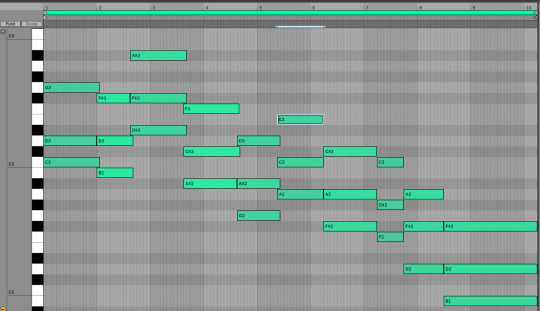
I emphasise at this point that I have no idea what I'm doing, I'm just pushing notes around until they sound good to me. Maybe I would know how to make them sound better if I knew more music theory! But also at some point you gotta stop theorising and try writing music.
So this chord progression ended up consisting of...
Csus2 - Bm - D♯m - A♯m - Gm - Am - F♯m - Fm - D - Bm
Or, sorted into alphabetical order, I used...
Am, A♯m, Bm, Csus2, D, D♯m, Fm, F♯m, Gm
Is that too many minor chords? idk! Should all of these technically be counted as part of the 'progression' instead of transitional bits that don't count? I also dk! Maybe I'll find out soon.
I did not even try to stick to a scale on this, and accordingly I'm hitting just about every semitone at some point lmao. Since I end on a B minor chord, we might guess that the key ought to be B minor? In that case, we can consult the circle of fifths and determine that F and C would be sharp. This gives the following chords:
Bm, C♯dim, D, Em, F♯m, G, A
As an additional check, the notes in the scale:
B, C♯, D, E, F, G♯, A
Well, uh. I used. Some of those? Would it sound better if I stuck to the 'scale-derived' chords? Know the rules before you break them and all that. Well, we can try it actually. I can map each chord in the original to the corresponding chord in B minor.
This version definitely sounds 'cleaner', but it's also... less tense I feel like. The more dissonant choices in the first one made it 'spicier'. Still, it's interesting to hear the comparison! Maybe I could reintroduce the suspended chord and some other stuff and get a bit of 'best of both worlds'? But honestly I'm pretty happy with the first version. I suppose the real question would be which one would be easier to fit a lead over...
Anyway, for the sake of argument, suppose you wanted to divide this into three melodies. One way to do it would be to slice it into low, central and high parts. These would respectively go...
Since these chords mostly move around in parallel, they all have roughly the same shape. But equally you could pick out three totally different pathways through this. You could have a part that just jumps to the nearest note it can (until the end where there wasn't an obvious place to go so I decided to dive)...
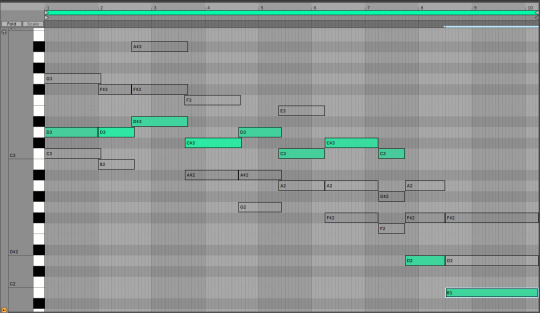
Those successive relationships between notes also exist in this track. Indeed, when two successive chords share a note, it's a whole thing (read: it gets mentioned sometimes in music theory videos). You could draw all sorts of crazy lines through the notes here if you wanted.
Nevertheless, the effects of movements between chords come in part from these relationships between successive notes. This can give the feeling of chords going 'up' or 'down', depending on which parts go up and which parts go down.
I think at this point this post is long enough that trying to get into the nitty gritty of what possible movements can exist between chords would be a bit of a step too far, and also I'm yawning a lot but I want to get the post out the door, so I let's wrap things up here. Next time: we'll continue our chord research and try and figure out how to use that Roman numeral notation. Like, taking a particular Roman numeral chord progression and see what we can build with it.
Hope this has been interesting! I'm super grateful for the warm reception the last two articles got, and while I'm getting much further from the islands of 'stuff I can speak about with confidence', fingers crossed the process of learning is also interesting...
66 notes
·
View notes
Text
got tagged by @annunakitty in a thing! yippee tag game!
now the tag game was to introduce yourself with:
one tv show
one movie
one album
one video game
however, i'm doing two for each category! why? because i'm cute and special and get to change the rules, of course! and also because i'm really enthusiastic about sharing my favorite things with people.
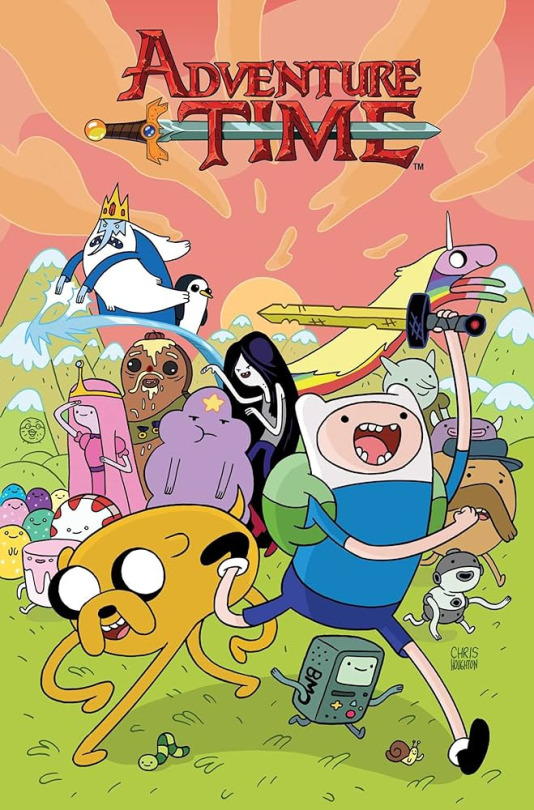
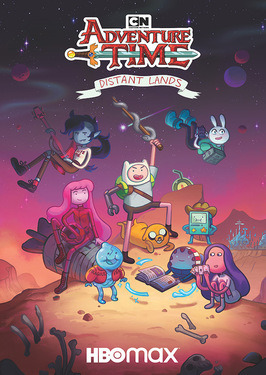
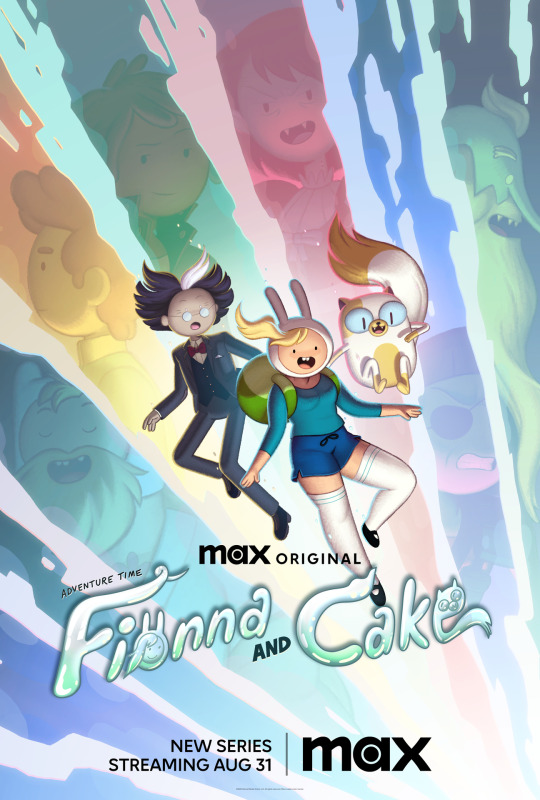
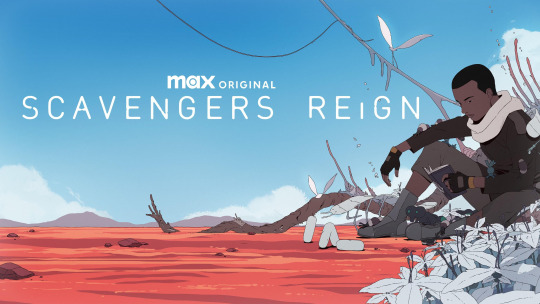
tv shows: adventure time & scavengers reign
not being able to pick between these two shows is the reason i'm doing two for each category. adventure time is my all-time favorite show hands down, but scavengers reign took second place (overtaking russian doll, which previously held that rank) when it absolutely blew me away earlier this year. i've watched it twice now and definitely plan on giving it a third watch sometime soon.
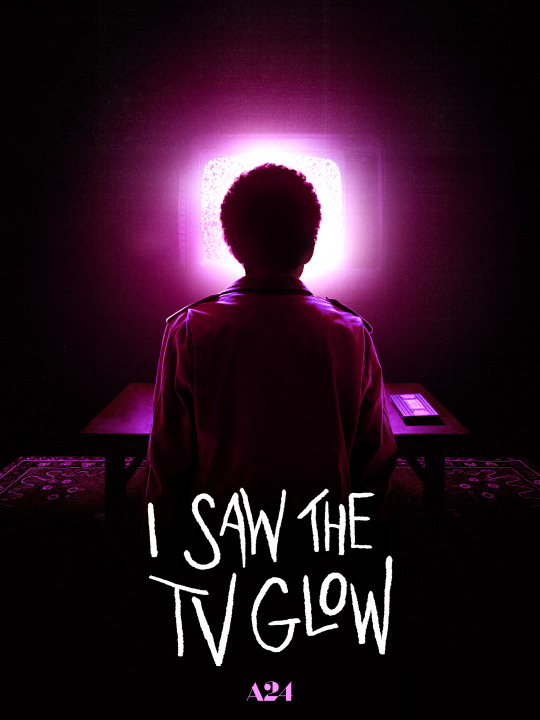
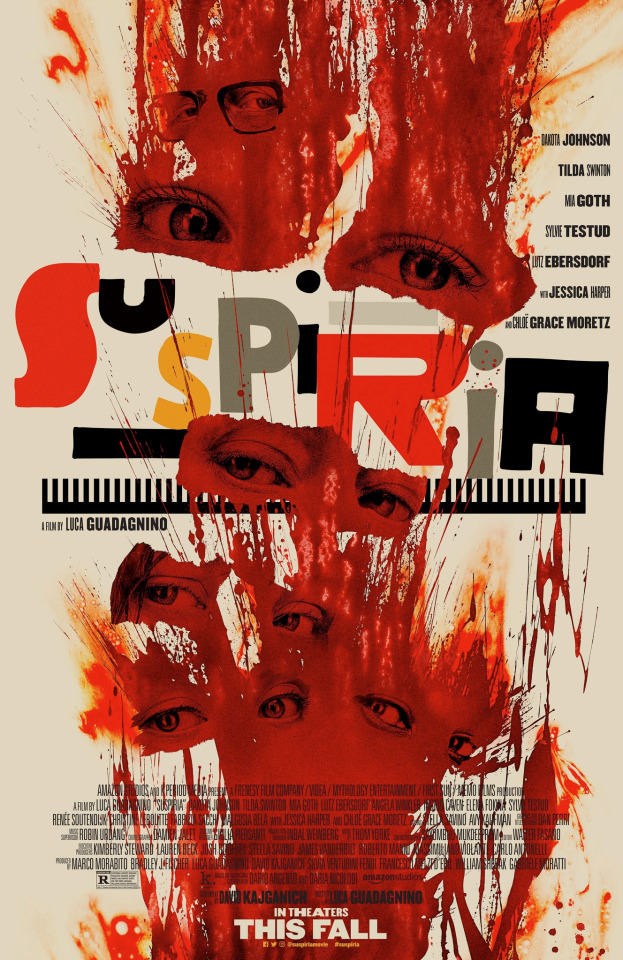
movies: i saw the tv glow (2024) & suspiria (2018)
as someone who repressed my gender really hard throughout most of college after flirting with transitioning in high school, this movie really spoke to me. i've seen it twice now and found a lot of value in the rewatch. i definitely want to watch it again at least one more time. this is an incredibly profound movie that has changed me as a person.
on the other hand, suspiria (2018) is an enduring favorite of mine for a very silly reason. it is a straight up good movie, but the actual reason it's my second pick for this post is that for like a year after first watching it, i kept seeing the mangled bodies of characters from it as sleep paralysis hallucinations. it was terrifying at the time but i find it incredibly funny to look back on, and think very fondly of this film in general. i got to rewatch parts of it for free irl! thanks, sleep paralysis demons!
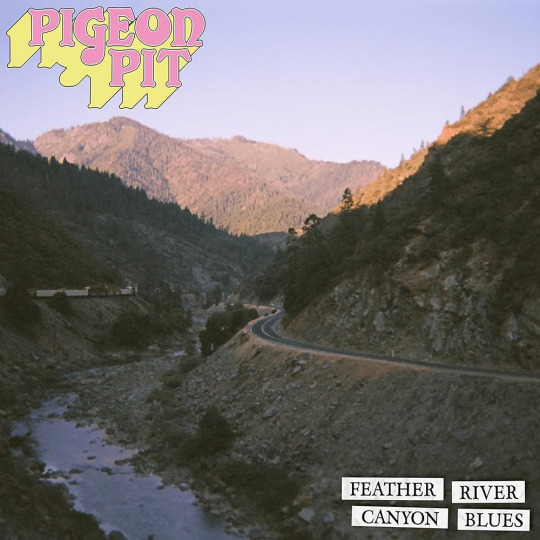
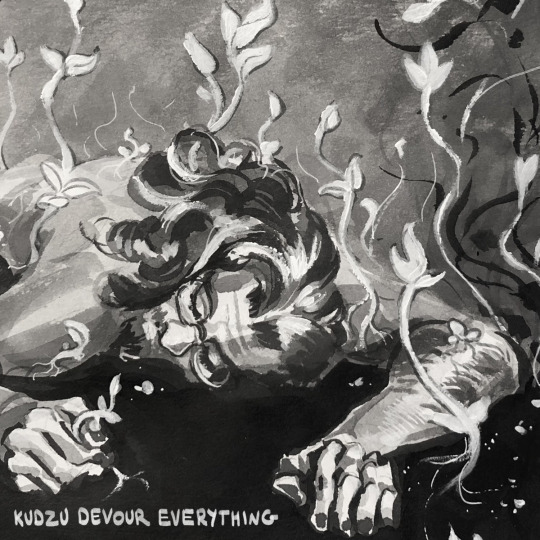
albums: feather river canyon blues by pigeon pit & kudzu, devour everything! by levees
for two years now, feather river canyon blues has very unambiguously been my favorite album of all time. it's lomes oleander's bold, dense, imagery-filled lyricism at its best, backed by the full band that her voice deserves playing alt-country sounds that strike the perfect balance between gentle and energetic. it's simultaneously desperate and hopeful, joyous and melancholy, and at every moment filled to the brim with emotion and beauty. this album feels like watching every sunset at once surrounded by your best friends and loved ones. transgender folk music will save us. if you have to pick one song from this album to listen to, make it milk crates:
kudzu, devour everything! is the reason i started playing banjo. levees is a friend of a friend, and i was introduced to their music because said friend was praising this album in our friend group's discord server. i find levees' idiosyncratic manner of clawhammer playing--often very fast and full of non-traditional rhythms--to be absolutely magical. their songwriting is also excellent, full of vivid stories and characters sung about in prose that weaves effortlessly between the elegantly straightforward and beautifully dense. i also recommend listening to their album vultures, as well as quarantipilation volumes 1 & 2. it's actually not one of the songs that contains banjo, but if you have to pick one to listen to from this album, i recommend her/hymn/their, which won't embed for some reason but hey here's the link
(also, honorable mention to drink the sea by the glitch mob, which is the first album i ever really fell in love with, and which inspired little 13-year-old elise to grab a copy of ableton and learn how to make music myself. until feather river canyon blues came along, i would have probably picked drink the sea for this post.)


video games: signalis & mice tea
first off, i cried at the end of signalis! while streaming! it was really, really good!!! it has a delightfully dreadful atmosphere, great story, very interesting worldbuilding, phenomenal art style, and excellent character design. plus, it was great for practicing my german. i strongly recommend signalis to anyone who likes survival horror.
second off, yes, i am choosing mice tea, a transformation fetish visual novel, as my second pick here. judge me all you like. i stand by my choice. its story is fun! the characters are excellent! its humor and conceptual ridiculousness disarm you and make way for genuinely emotionally impactful storylines! it has a lot of interesting commentary on gender! it almost single-handedly turned me into furry! also, it's hot! go play mice tea!
now, finally, it is time to tag! don't feel pressured to pick multiple things or provide explanations like i did! i just enjoy doing more than is assigned lmao. tagging @rotten-spaceymage, @birras0, @citrusuprising, @roboticvenusian, @femboty2k, and anyone who sees this and wants to do it themselves!
15 notes
·
View notes
Text
the pain of reproducing a previous project into another daw is real. of course all the instruments had to be a little out of time or else it wouldn't be the right vibe. why why why. i recemtly swtiched from studio one (presonus) to ableton live, so.... and i just have more resources with ableton and everything sounds better in it so im at a crossroads tbh. i dont want to fuck up the recreation but "I also want it to sound as good as possible. that quote mark not supposed to b there but im too lazy to take it out. urrrhhhhhgggg. the midi exports are being weird and quantizing on their own.
honestly i did cheat with the percussion bc i think it sounded good already so i just exported the stems lol
5 notes
·
View notes
Note
Just wanted to follow up on your lovely reply—hope it’s okay I drop this in your inbox.
Thank you for your incredibly kind words, truly. I’m so happy the piece resonated. 😁 And to answer your questions: The whispers are from a vocal library called Shevannai—I like how soft and ethereal they sound, like something lifted from a Tolkien world. I believe they’re not real Elvish, just phonetics, but they felt right for the song. The female chantings are from Zero-G ETHERA Gold 2.5—the singer is Clara Sorace. If you look her up on YouTube, the things she can do with her voice are honestly impressive.
As for the crispness—thank you! Getting them to sound crisp often comes down to the quality of the libraries, plus some mixing magic and performance tweaks. Even good headphones or speakers can help polish things up, depending on how you’re monitoring your mix. I honestly still struggle with it too now and then. I also occasionally blend in real instruments with VSTs when I can, but for this piece, it was entirely VST-based.
And if you ever have music questions, don’t hesitate to reach out. I’m always happy to help if I can. 🫡
Omg of course! My inbox is always open and I cherish every message 😁💕
Again, phenomenal work on this arrangement 🥰 but you already knew that!
That’s amazing!! The whispers were SUCH a nice touch to add to the feel and give it a sort of Tolkien-esque whimsy. It just made the soundscape that much richer!! Great addition 😄 I need to check out your resources!! I’m usually on Ableton, pretty sure the library is compatible!!
Yesss, your quality is amazing!! I struggle with equalizing and balancing eq all the time, but sometimes my plugins don’t come through with that crystal clear level you have going on here! (I am using like a fuck ton of distortion 😅, admittedly) so I’m kind of always chasing that elusive clean tone. I swear, even my VST’s aren’t half as smooth!!! So gorgeous.
I’d love to pick your brain sometime and troubleshoot, if it wouldn’t bore you to tears haha 😭
#ask#depresso1188#music composition#using this for ref!#what even are my tags anymore smh#we used to be a proper blog
4 notes
·
View notes
Text
Deepchord Presents Echospace - Liumin (2010)

backlit airport LCD, up while everyone's asleep, neon sign behind some fog, modern techno travelogue
Ring the bell! We have another Alex-approved ambient classic on our hands. Numerous field recordings flatten urban Japan to little sonic Polaroids---trains rattle and pipes hiss and rain falls and crowds of people murmur in the background like relaxed spectators---that are then stacked so high as to become skyscrapers again, reconstructing the city like one of those digital mosaics where every piece is its own tiny photograph. On top of all these crackly sounds are the requisite "minimal techno" synth pads, thick in the middle and low ends so as to further muddy the already-impressionistic image.
This resulting huge mass is cut down to size by some unassuming yet powerful kick drums. They slice through the field recordings like God's knife through the Grand Canyon, laying bare the constituting layers so clearly that the whole sonic assemblage feels as minimal as any individual piece.
"Sidechain compression" is the name of this specific process, wherein one instrumental track (typically the one reserved for the kick drum) is used to periodically lower the volume of another track. Whenever the volume of Track A rises above a certain threshold, the volume of Track B quickly dips out, then fades back in.
Ambient music often utilizes fades, either to transition between sections of a song (as Éliane Radigue often did), or to fade in and out of the larger track itself. This latter use of fading positions the track as existing outside the listener's periphery, with the fade in being the moment the track happens to enter their view, and the fade out being the moment it leaves.
With sidechain compression, this fading process happens multiple times a second, as if the listener is being constantly reintroduced to the same track. That repetition, aside from easing the listener into a trance-like state, also encourages a person to see the composite parts of a track as they slide back into place. It's sort of like The Disintegration Loops, where layers of a sample are slowly stripped away through repetition, except much faster and in reverse: the track is rebuilt from the ground up over 120 times a minute.
The trance-like state is far from incidental. Liumin, being a sort of travelogue, makes extensive use of train noises, in particular the rattling of train tracks. This rhythmic shaking and thumping is like a non-techno techno song, and is utilized across Liumin as a rhythmic anchor. Like all techno, the driving force of the kick drum makes the listener feel like they're going somewhere, with the various train noises of course accentuating this. But Liumin doesn't offer much of a destination, instead luxuriating in that liminal space of travel.
I'm reminded of the seminal early ambient techno piece E2-E4, which Manuel Göttsching made on the fly and listened to on a personal trip. And I'm thinking of The KLF's Chill Out, which is like Liumin but for the English and American countrysides instead of Japan, complete with various train noises and throbbing techno beats.
Liumin is particularly fascinating to me in that it charts a clear progression from its stylistic predecessors. Techno is a genre beholden to technological progress. It is rigidly simple, and this simplicity is enhanced by new audio editing software in the way digital photography is enhanced by new cameras that can take pictures in 800k or something. Every new audio effect Ableton adds lets producers make their kick drums and synths even more specific, lets them carve out a space within the small niche that is four-on-the-floor minimal dance music. Liumin is a lot simpler than Chill Out, but it feels so much clearer for it.
"Pure" ambient, on the other hand, has been making lateral moves for many years up to this point. It's largely idea- and vibes-based, so the only barrier to making something "new" is coming up with a new idea, an idea that typically could have been realized had it come about any time in the past decade. Ambient music released in 1990 and ambient music released in 2000 can sound very different, but that doesn't mean the music from 2000 sounds more "advanced," just that the two pieces are based on different ideas.
So all of this is to say that Liumin is an amazing album. It's futuristic and liminal and all the other buzzwords. Listen to this if you love trains or Place, Japan.
youtube
2 notes
·
View notes
Text
Das Kapital, FL Studio's version
One more sleepless night in this wonderful yet pathetic cell… my bedroom, of course. Some Rap Songs weeps through me with its abstract instrumentals by randomblackdude and this suffering Earl, who once disturbed, then influenced me back when I was heading to school at the age of 11. My second shock after the eternal trauma of Madvillainy. That album reminded me how important it was to have YOUR OWN SOUND (which translated in french goes "SON SON" shoutsout to grandpa Godard for this one). I don’t even remember if I was making music at that time; my lyrics, still in their embryonic stage, were already scribbled down in the notes app of the first phone my mom gave me.
Little Kay was frustrated: the lyrics and the flow were there, but not the voice. Then Thebe, with his effortless voice, decided to show me it was possible (just as Danny Brown, Eazy-E, and even DOOM would later do). I could rap. I could write. I was born for this.
I should probably revisit that frustration because it led me to discover one of life’s greatest joys: composition. It was after my brother showed me a Rhythm Roulette episode (notably the ones with 9th Wonder, Mac Miller, or Oh No) that my love for hip-hop, beyond just listening to it, pushed me to dive into sound creation.
The type beat era—that’s my generation. One of the greatest pitfalls wasn’t using these templates to elevate yourself but staying stuck on the same level, the same floor, as when you started. I understand why those beatmakers are hated so much: they’re at the mercy of mediocre rappers. But is it the fault of those mediocre rappers or the mediocre producers? Probably a bit of both. That’s why I decided to step away from the life of a mere producer. I chose to keep my sounds for myself and for people I consider to be part of the same world, the same reality. I blame those FL or Ableton mascots who pressure me to not sample, to experiment but not too much, all for the sake of profit.
Maybe it’s narcissism; I’m not sure. What I do know is that the idea of erasing my own sounds, my own pain, my own sensitivity—all those hours spent tinkering with software to express my desires—just so some stranger who doesn’t know me, doesn’t respect me, can come along and destroy it all… just no.
My life breathes out through my beats the same way these drums exhale my damn troubles—the ones that make you want to die.
#some rap songs#mf doom#hip hop#art#writers on tumblr#music blog#blog#short story#music#essay#personal essay
2 notes
·
View notes
Text
Melodic Balance: Unity & Diversity
In the vast realm of music, the concept of melodic balance stands as a pillar of compositional artistry. The balance between unity and diversity within melodies not only captures the listener’s attention but also evokes a spectrum of emotions, crafting memorable and impactful pieces. Understanding how to achieve this balance is essential for composers and musicians aiming to create captivating music.
Understanding Melodic Unity
Melodic Unity refers to the cohesiveness within a melody that makes it recognizable and memorable. This unity is often achieved through repetition, motifs, and thematic consistency. By repeating certain musical phrases or themes, a composer can create a sense of familiarity and structure.
Techniques to Achieve Unity
Repetition: The simplest form of unity is repetition. By repeating a particular melody or rhythmic pattern, a piece gains a sense of coherence. This technique is prevalent in various genres, from classical to pop music.
Motifs: A motif is a short, recurring musical idea. It can be a sequence of notes, a rhythm, or even a chord progression. By weaving motifs throughout a piece, composers can create a thread that listeners can follow.
Thematic Development: This involves taking a theme and developing it throughout a piece. The theme might undergo variations in dynamics, tempo, or harmony but retains its core identity, providing unity.
Embracing Melodic Diversity
While unity provides a foundation, diversity brings life and interest to music. Diversity in melody is achieved through variation, contrast, and the introduction of new ideas. It prevents music from becoming monotonous and keeps the listener engaged.
Techniques to Achieve Diversity
Variation: Introducing variations to a theme can maintain the essence of a melody while offering new perspectives. Variations can be achieved by altering the rhythm, harmony, or melodic contour.
Contrast: Contrast can be created through dynamic changes, shifts in tempo, or by juxtaposing different musical ideas. A sudden change from a quiet, slow passage to a loud, fast one can create a striking effect.
Modulation: Changing the key or tonal center of a piece can introduce a fresh element to the melody. Modulation adds complexity and richness, enhancing the overall musical experience.
Striking the Balance
The magic of music often lies in the delicate balance between unity and diversity. Too much unity can lead to monotony, while excessive diversity can cause confusion. Achieving the right balance involves a thoughtful blend of repetition and variation, familiarity and surprise.
Practical Examples
Classical Music: In Beethoven’s Symphony No. 5, the famous four-note motif is repeated and developed throughout the piece, providing unity. However, Beethoven introduces variations and contrasts in dynamics, orchestration, and harmony, maintaining the listener’s interest.
Jazz: Jazz musicians often start with a standard melody (the head) and then improvise, creating diverse variations while frequently returning to the main theme. This interplay between the original melody and improvisational sections exemplifies balance.
Pop Music: In pop songs, the chorus often serves as the unifying element, with its repetition making it memorable. Verses provide diversity, offering new lyrics and melodies that contrast with the chorus.
Conclusion
Melodic balance, achieved through a harmonious interplay of unity and diversity, is crucial for creating compelling music. By understanding and applying techniques to balance these elements, composers and musicians can craft pieces that resonate deeply with listeners, standing the test of time. Whether through the grandeur of a symphony, the spontaneity of jazz, or the simplicity of a pop song, the principles of melodic balance remain universal, guiding the creation of music that moves the soul.
#logic pro course#music production#online music production course#learn music production online#music production courses#mixing and mastering#learn to explore#ableton course#music#learn music production
1 note
·
View note
Text
how i started making music
after visions by grimes came out, she told the press she produced the entire album (and everything before it) on garageband. i took that and ran with it; i had been given an ancient macbook my sister used in college that weighed ten pounds and burned any surface it sat on to use in high school and i knew it had garageband. i played piano and violin and sang and would over the years try desperately to learn guitar but felt like DAW production was a less accessible skill. before garageband i used audacity to record little songs a la canadian songwriting hero nicole dollanganger. she becomes relevant again shortly. so like a year later, ariel pink and grimes got into a PR tussle, and i knew him after a taste of before today (i think the song was fright night) came up on my tumblr feed. soon i was an ariel pink super fan. by this time (mid 2010s) i listened to two artists and an unrelated genre almost exclusively--ariel pink, crystal castles, and black metal. i spent hours on soulseek trying to scrounge up demos and live recordings by bands i couldnt cross-reference with metal archives or rym. i also listened to all the staples; mayhem, immortal, darkthrone, judas iscariot, and he who shall not be named... etc. nicole dollanganger had remained a massive influence for me because her lyrical themes and production style (sort of) was the convergence in my primary musical listening rotation. during this time i purchased my first portable tascam recorder, drum machine, and learned to transfer my casio presets into midi presets so i could mess around with the sounds. decided to learn how to do this after i destroyed a small casio attempting to circuitbend. i was learning how to transfer my tape recordings to my computer and also record my synthesizer directly onto tape and not through amp and mic (i know i can't believe some of things weren't common sense to me either) too. the only thing i spent any considerable amount of money on is ableton. all of my gear is old and/or broken and/or purchased for cheap. it's been some time since all this... the quantity of music i have recorded over the last give or take fifteen years is quite overwhelming, i would say i only return to recordings from the last eight years. of course i lost pretty much half of it in the thrush of living life and currently i have limited access to my equipment and tape+usb stored recordings because they are physically hidden lol. my full setup will be back some day but i have a lot of material to work with in my apartment just on my laptop, which is a newer macbook, also handed down to me by blood relatives.
fin..
11 notes
·
View notes
Text
8.1.24 / day 39 of romanticizing my life until i love myself again









lughnasadh - the first harvest
i saw tb today it kills me how pathetic i feel around them, still how i can barely focus how i turn into just pure putty (with spikes)
today is lughnasadh, the pagan holiday for the first harvest asking myself what i’ve harvested this summer, what i still need to harvest into the next season what i need to tend to sometimes it feels like i’ve done nothing but been holed up in my apartment and then i realize, i moved, on my own, into my own place for the first time in my life, and even though i feel like i’m d r o w n i n g mentally, financially, creatively i am still the stable friend, i am the only one who is completely self-supportive and making it work somehow and i did this shit, on my own i mean, obviously i’ve had help, and i’m so grateful to the friends who’ve shown up for me in this process sometimes, though, i think i forget to take a moment and appreciate myself for what i’ve done
i am lonelier these days, it’s true before i was overwhelmed it is so hard to get to know yourself in so much noise
and when did i become so afraid of the world, of other people, of myself, my decisions when did i become so weary of the present and revert to what i swore off years ago
addicted to deadlines, hyper scheduling, treating your passion like a job you are chained to, viewing art as a business venture—and you think that will save you now? you think that will give you what you’re searching for? what? because your father said so? because he is so happy and satisfied and in love and successful and never has to work a day in his life because it’s his passion? of course not, silly
do not become what you hate simply because the other option is unknown
“first, you are an artist,” kingston told me
and i look back on my days, spent nesting, spent dealing with other peoples’ bullshit, cleaning, cleaning, cleaning, resetting everything to perfection every day anxious about money trying to conjure work into thin air by worrying it into existence (it doesn’t work) wondering why my friends aren’t texting me wondering why no one can hang out wondering why i’m not done with this song yet
in those days i did not prioritize being an artist, i did not prioritize my art, i did not feel like an artist first the past week i have just begun to feel like an artist first again
and it’s ok, sometimes you need to take time to find solid ground and sometimes, it’s hard to come back, even when you’re ready, even when you need it, because coming back to your instruments, your machines, is like coming back to a lover you haven’t seen in a couple of months, touching their body for the first time, you remember everything of course, but sometimes, things change, evolve, some things don’t work the way they’re supposed to and you have to trouble shoot in the beginning (maybe they’re nervous) (that’s what i tell myself every time ableton crashes)
so now, it’s time to remember: it’s okay to make a late payment, feed yourself and make music while you wait for work it’s okay to let the sink get a little full, keep making music, don’t disrupt your flow by going into a cleaning spiral it’s okay to eat what you can and not spiral while trying to keep up with the instagram organic all the food in the grocery store is poisoning you girlies it’s okay to get the cheaper produce, you’re eating vegetables and that’s great it’s okay to leave it til fucking tomorrow it’s okay to let it all go and be an artist
what else were you doing with that time, keeping house and being anxious? make some art about it, it feels better than cleaning i know this compulsion of yours has become self-soothing, but remember that is what art is for, not sweeping.
let go, and make some art this season
#8.1.24#lughnasadh#day 39#everything is romantic#deardiary#online diary#photo journal#online journal
2 notes
·
View notes
Note
hey nicky 👋 meant to ask: what kinda gear/software do you use to make your music? :0
ok so here's the thing: most physical gear is not needed for the electronic music i make. i love me a physical synthesizer but i'm the mayor of VST City. you can do a lot with free VSTs and i do quite a bit. Gear Acquisition Syndrome is beatable (also torrenting, say, the Arturia V collection doesn't count as acquiring gear so hypothetically that's something i could've done)
i mostly work in Ableton but when i do chiptune it's LSDJ on my modded Game Boy. i've also been playing around with Renoise which i enjoy so far. only recently i've stared incorporating real guitar and bass into the mix, so i have... some kind of guitar i got in a craigslist trade, it's a strat knockoff + a bass my gf inherited and lets me play. and of course an audio interface to plug stuff into my laptop. that's about it!
6 notes
·
View notes
Text
Damn at this time last year i really thought that the majority of the music i would make this year would be synthy, left-of-center dance music. and while i do still make that kind of music the majority of my recorded/performed product from this year has been fucking. electro-acoustic comprovisation because that's the direction the wind decided to blow me. not that i'm complaining of course; getting to make music where the inherent idiom is performance and develop my own artistic impulses intertwined with other people has been wonderful, and it lets music that i've taken part in making go to some really interesting places. It's a much more joyous process than being shirtless in my apartment grinding out tracks in ableton lol
#i used to fucking STRESS about how i would ever play music in a live setting#the answer wound up being 'just make a bunch of friends who also want to do the same thing' :)
2 notes
·
View notes
Text
The Great Equalizer: How Technology Democratized Music Production by Gary Dranow

Hey there, fellow music lovers!
I'm Gary Dranow, and today, we're diving deep into a phenomenon close to my heart: the democratization of music production through technology. Gone are the days when you needed a multi-million dollar studio to craft a masterpiece. In this modern era, your laptop and a spark of creativity might just be enough!
From Exclusivity to Accessibility
Historically, the realm of music production was reserved for those with the means to access high-end studios and equipment. However, technology has been a great equalizer, leveling the playing field and providing everyone the opportunity to become a music producer.
Affordable Beginnings with GarageBand
Enter GarageBand – Apple's gift to budding musicians. This free software, preloaded on every Mac, offered a suite of production tools that, while basic, were more than enough for many to start their journey. GarageBand made it possible for anyone to dabble in music creation, recording, and mixing without any initial investment.
The Rise of Advanced DAWs
For those who sought more advanced capabilities, software like Ableton Live, Logic Pro, and FL Studio entered the scene. They offered a professional-grade music production environment at a fraction of the cost of traditional studio setups. Ableton Live, for instance, is not just a DAW but a performance instrument in its own right, empowering DJs and electronic musicians globally.
Online Platforms: The Power of Collaboration and Learning
The internet has further pushed the boundaries. Platforms like SoundCloud and Bandcamp provide artists a space to share and monetize their music. Meanwhile, collaboration tools such as Splice and Endlesss have made remote collaborations seamless.
For those keen on learning, there's a vast universe of online resources. Websites like Coursera, Udemy, and Skillshare offer courses on everything from basic music theory to advanced production techniques. And let's not forget the plethora of YouTube tutorials, where seasoned professionals and enthusiastic amateurs alike share their knowledge.
Conclusion: A New Era of Music Production
The landscape of music production has undeniably transformed. Today, a teenager in their bedroom has the same power to produce music as a professional in a high-end studio. This shift has led to a beautiful diversity in music, with genres and sub-genres flourishing, and voices from all corners of the world being heard.
While technology has made music production accessible, it's the passion, creativity, and soul of the artist that truly makes a piece resonate. So, to all the budding producers out there – the world is your oyster, and your soundtrack is waiting to be written.
Until our next musical discourse, keep experimenting, keep learning, and most importantly, keep producing.
Warm regards,
Gary Dranow
3 notes
·
View notes